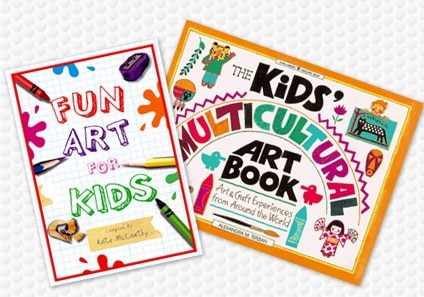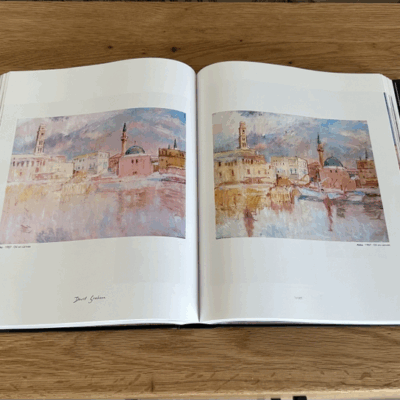Recognizing the Process Behind Top Notch Art Book Printing for Art Lovers
When it involves top quality art book printing, comprehending the details of the process can boost your admiration for the last product. You might not recognize just how vital paper option and ink options are to the vibrancy of art work. Each element plays a substantial duty in attaining the preferred result. As you check out the numerous components of art book printing, you'll reveal understandings that could transform your viewpoint on art conservation and presentation.
The Significance of Paper Selection in Art Book Printing
When it concerns art book printing, the option of paper can make or damage the end product. You desire your artwork to shine, and the appropriate paper improves color vibrancy and detail. Think about variables like weight, appearance, and surface; these elements considerably influence how readers perceive your work.
For example, a larger supply conveys top quality and longevity, while a textured finish can add deepness to images. Smooth paper is exceptional for detailed reproductions, enabling great lines and subtle tones to appear crisp.
Don't fail to remember about the paper's illumination; a brighter sheet can assist shades pop, making your art more distinctive. You'll likewise intend to consider exactly how the paper interacts with inks and whether it can manage the printing process without deforming or bleed-through. Eventually, selecting the best paper establishes the phase for your art, guaranteeing it catches the target market's interest equally as you visualized.
Selecting the Right Inks for Vibrant Recreations
Choosing the right inks is equally as essential as choosing quality paper to accomplish vibrant recreations in your art book. When you're publishing art work, you desire colors that stand out and properly represent the initial piece. Opt for inks with a high pigment concentration; these have a tendency to produce richer and more saturated shades.
You could take into consideration utilizing historical inks, which stand up to fading gradually, guaranteeing your art book stays as striking as the day it was printed. If you're collaborating with pictures or electronically developed art, pigment-based inks can offer a bigger color range, enhancing detail and depth.
Don't ignore the coating! Matte and glossy inks can considerably change the appearance of your artwork, so think of the appearance you're aiming to accomplish - art book. Eventually, the appropriate ink option matches your paper option, producing a spectacular aesthetic experience for your viewers
The Role of Shade Monitoring in Publish Quality
Shade management plays a vital function in achieving high print top quality for your art book. It assures that the colors you see on your screen convert precisely to the printed web page. Without reliable shade monitoring, your lively art work might show up dull or distorted, weakening your creative vision.
To begin, calibrate your screen consistently. This action helps keep regular color representation. Next, use shade profiles customized for your printer and paper type. These accounts direct the printer in duplicating shades properly, reducing disparities between digital and published variations.
When you prepare your documents, take into consideration using a shade area like Adobe RGB or CMYK, depending on your printer's specifications. Always proof your job, too; a test print can reveal any type of prospective color problems prior to the last run. By focusing on color management, you safeguard the honesty of your art, assuring your audience experiences it as you planned.

Recognizing Different Binding Strategies
Attaining the ideal seek your art book goes beyond shade monitoring; binding strategies likewise play a significant duty in its general discussion and longevity. You have a number of choices to examine, each with its own distinct characteristics.
If you're intending for a professional feel, case binding supplies a sturdy option with a difficult cover, ideal for showcasing your art work. On the various other hand, ideal binding gives a flexible spinal column while maintaining costs down, making it a prominent selection for hop over to these guys softcover books.
Spiral binding enables your art book to lay level, which is wonderful for displaying photos without blockage. Saddle sewing is ideal for smaller brochures, giving a clean finish without the mass.
Ultimately, the binding technique you select must mirror your artistic vision and how you desire readers to engage with your work. Make sure to evaluate these choices meticulously to achieve the very best outcome for your project.
The Impact of Publish Size and Layout on Discussion
While the selection of print size and format might appear additional to material, they significantly affect exactly how your artwork is regarded. The dimensions of your prints can either enhance or lessen the influence of your items. Larger prints can attract viewers in, enabling them to appreciate detailed information, while smaller layouts may need more intimate engagement.

Conservation Methods for Long-lasting Art Books
To assure your art books stand the examination of time, it's crucial to carry out effective conservation methods. Start by keeping them in an awesome, completely dry atmosphere, away from straight sunlight and moisture. This avoids fading and bending, keeping your web pages intact. Usage acid-free storage boxes or safety sleeves to shield them from dirt and physical damage.
When managing your books, constantly clean your hands or wear cotton handwear covers to avoid oils and dirt moving onto the pages. Prevent flexing or creasing the spinal columns; rather, use book supports when presenting them.
For added security, take into consideration purchasing archival-quality materials for any type of repairs or enhancements. Consistently check your collection for indications of wear or damages, addressing issues immediately. By adhering to these simple techniques, you can assure your art publications remain dynamic and easily accessible for several years to come, preserving their charm and worth for future generations.
Teaming up With Printers for Optimal Results
When you're ready to print your art book, selecting the ideal printer is necessary to achieving your vision. Clear communication about your expectations and needs will help guarantee that both you and the printer are on the same page. Let's explore how to make this collaboration as seamless and effective as possible.
Picking the Right Printer

Efficient Interaction Strategies
Efficient interaction is crucial for transforming your art book vision into truth, specifically when collaborating with have a peek at these guys printers. art book. Begin by plainly outlining your project's goals, consisting of layout elements, favored materials, and any kind of details printing techniques. Don't think twice to share your ideas and referrals; this helps the printer understand your aesthetic
Be open to comments, as printers typically have important insights that can enhance your task. This cooperation will certainly ensure that your art book meets your assumptions and beams in its final kind.
Regularly Asked Inquiries
What Are Typical Errors to Avoid in Art Book Printing?
When publishing your art book, stay clear of typical mistakes like poor resolution pictures, inaccurate shade profiles, and neglecting page layout. Do not forget to check and double-check information to confirm your end product meets your assumptions.
Exactly How Does Digital Printing Differ From Typical Printing Approaches?
Digital printing makes use of digital files to develop prints straight, enabling quicker turnaround and modification. In comparison, conventional techniques include physical plates, which can be taxing and less adaptable for little runs or distinct styles.
What Is the Typical Turn-around Time for Art Book Printing?
The regular turn-around time for art book printing varies, however you can anticipate it to take anywhere from a few weeks to numerous months. Factors like complexity, amount, and printing approach all affect this timeline.
Can I Print a Restricted Version Art Book Financially?
You can print a minimal edition art book economically by picking cost-effective materials, enhancing print runs, and making use of electronic printing options. Careful planning and budgeting will assist you accomplish top quality without spending too much.
What Are the Environmental Factors To Consider in Art Book Printing?
When taking into consideration art book printing, you must think concerning eco-friendly materials, lasting inks, and energy-efficient processes (art book). Choosing local printers can likewise minimize your carbon footprint, making your project both stunning and environmentally accountable